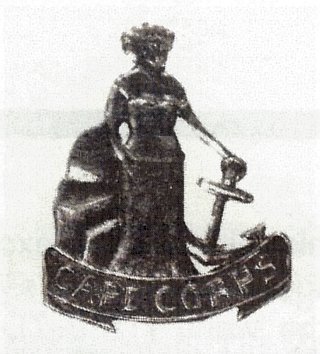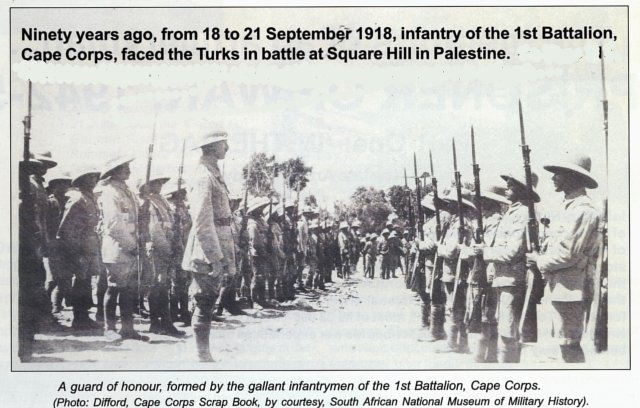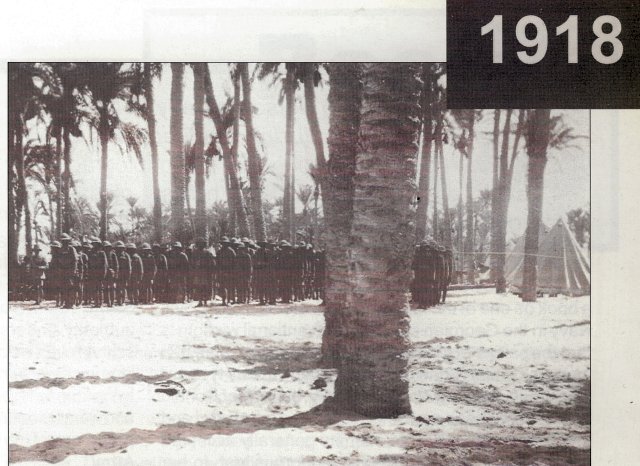

 The South African
The South African

On the night of the 17th September, we were marched down a kloof called Borthwick Wady (the word 'wady' meaning 'river-bed', but in Egypt and Palestine it is widely applied to a kloof) and here we put on our war-paint. Ammunition was distributed, and great preparations were made for the next day's work.

So we were detailed to take it. At four, we moved off and after meeting with a little opposition, we secured Square Hill. Day broke, and now the fight began in earnest. All day on the 19th, it was pandemonium. Bullets rained and shells whistled over our heads. On the 20th, 'C' Coy was sent round our right to take the enemy in the flank. They advanced in great style, but could not hold the part of the Gallows Hill they had taken as they were greatly outnumbered by the enemy.
On the morning of the 21 st, 'A' and 'B' Coys were sent round our left to engage the enemy on his front. They had no artillery 'preparation' and had to depend for the safety of their advance on our Lewis machineguns only. Their forward move was most orderly and, in pressing home their attack, they did splendid bayonet-work. But they, unfortunately, were outnumbered too, and had to retire also. Worse still, both their company commanders (Major Cowell and Captain Harris) along with several of their junior officers, were killed. In spite of this, their retreat was quite as orderly as their advance had been. It was during the advance of these two companies, that our Colonel [Lt-Col G A Morris] was wounded.
The remainder of our Brigade (160th Infantry Brigade) then swept forward and drove the enemy from Gallows Hill. The fight was over then, and we were relieved by some other troops. We did not know how much we had contributed to the 'Wizard's' (so the Turks had named General Allenby) Great Advance, but when the Turks had been driven out of Palestine, we found that:

Church parade of the 1 st Battalion, Cape Corps, at El Arish, Egypt, after the battle
(Cape Corps Scrap Book, SA National Museum of Military History).
Return to Journal Index OR Society's Home page
South African Military History Society / scribe@samilitaryhistory.org